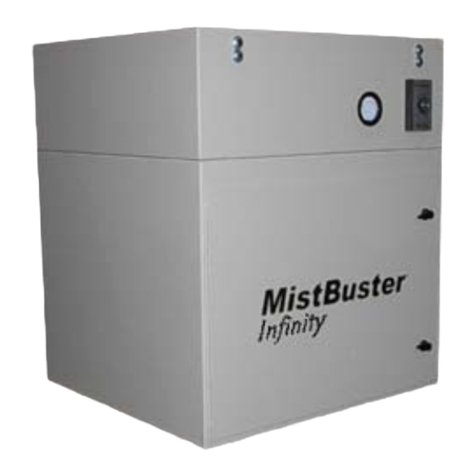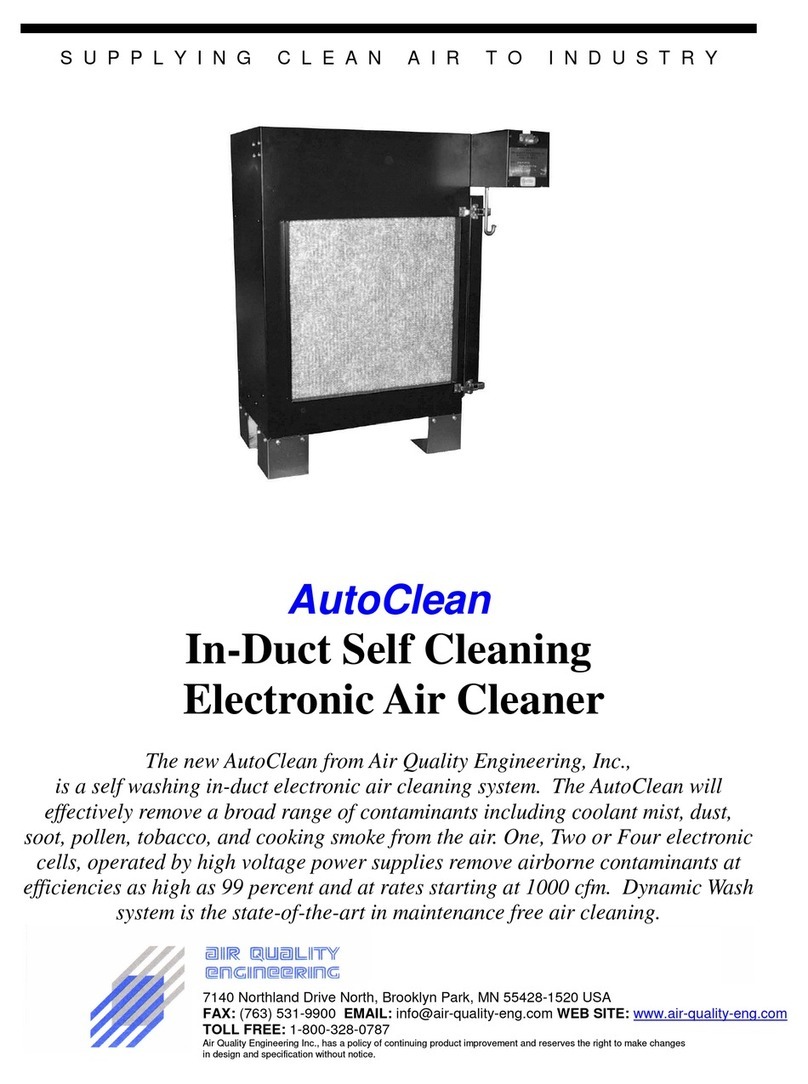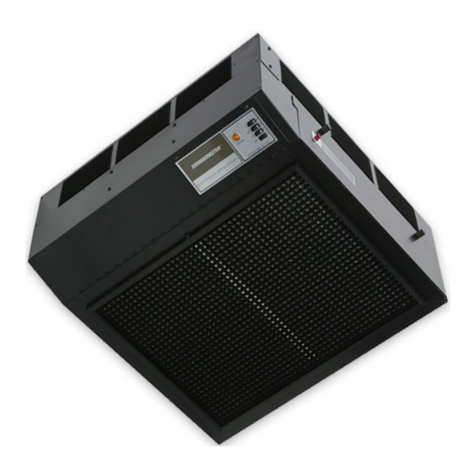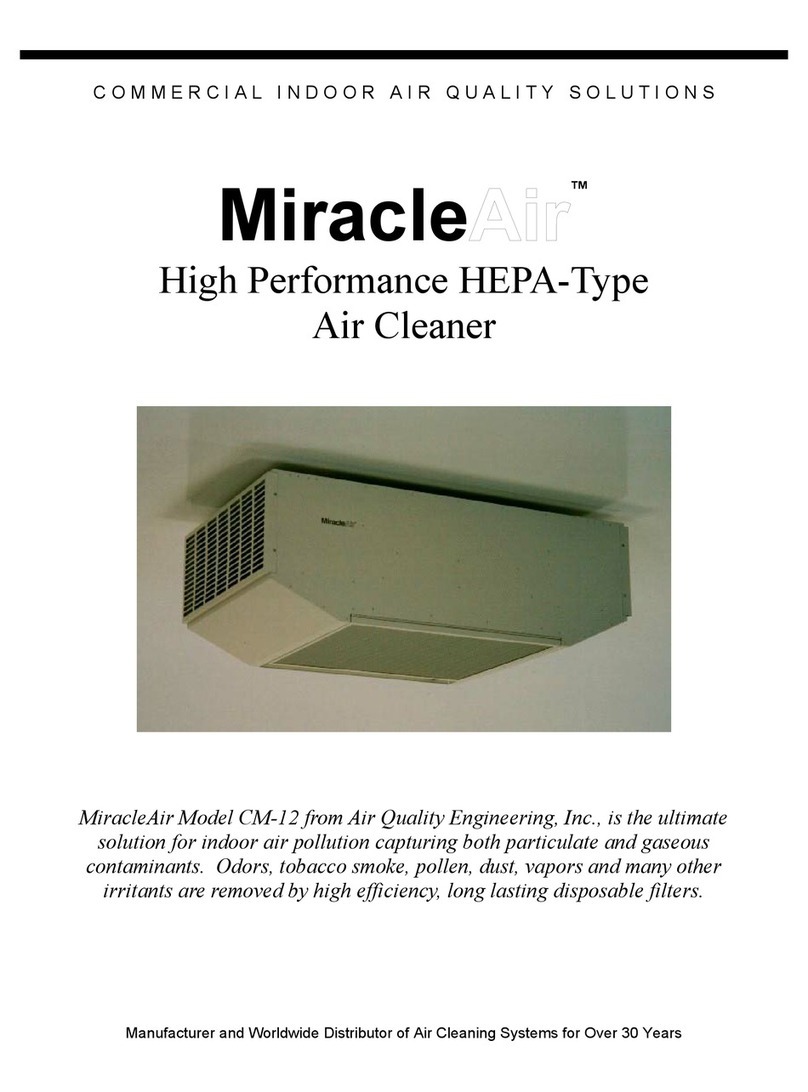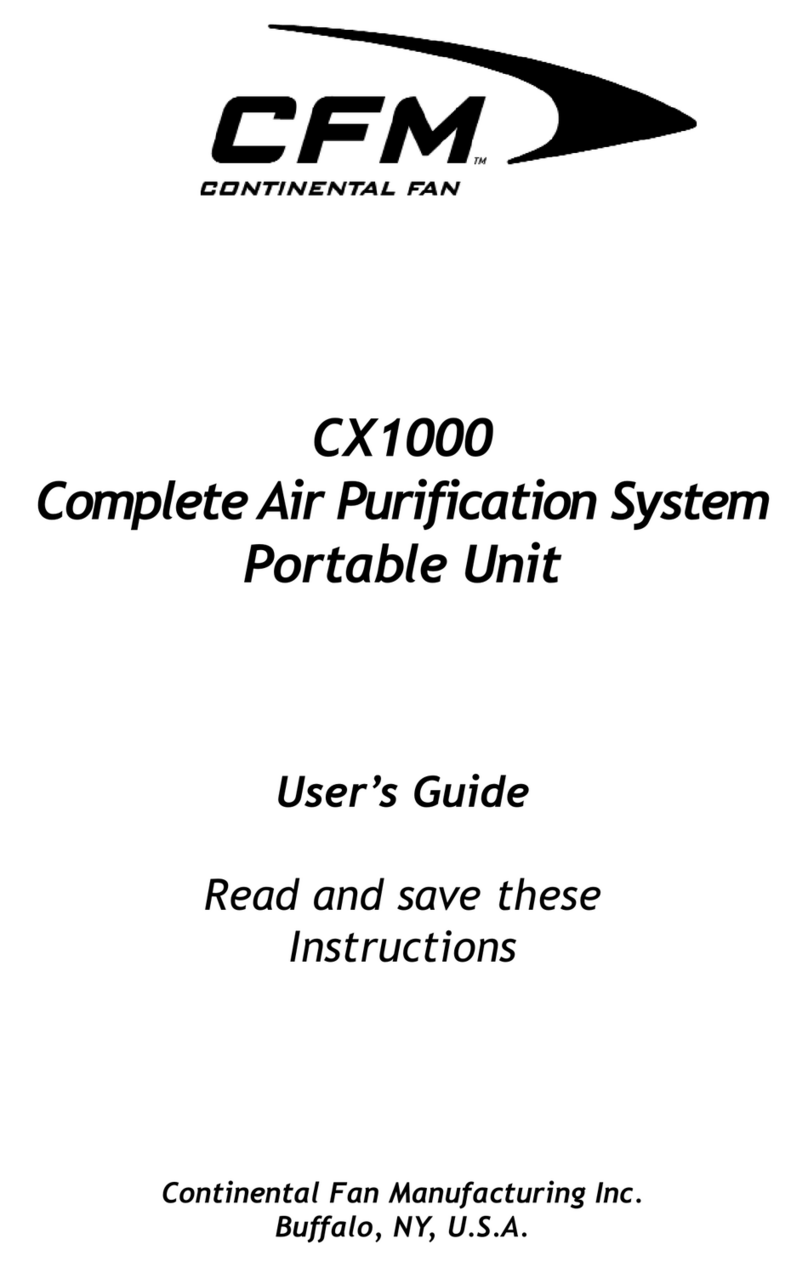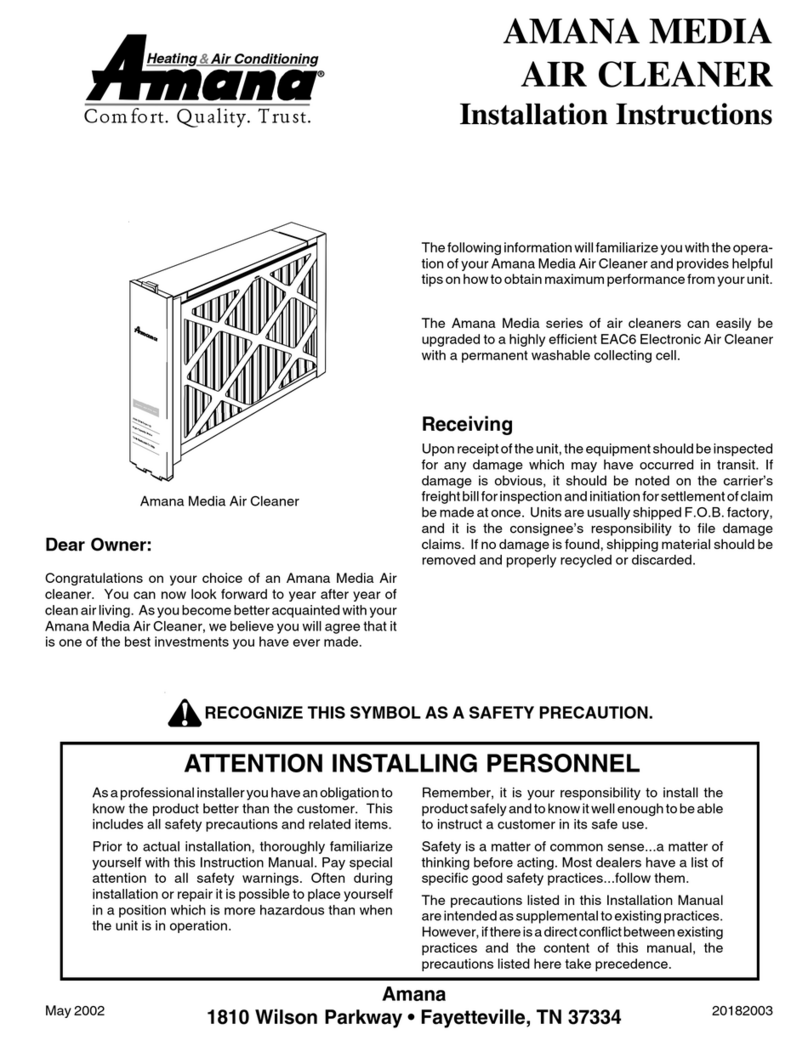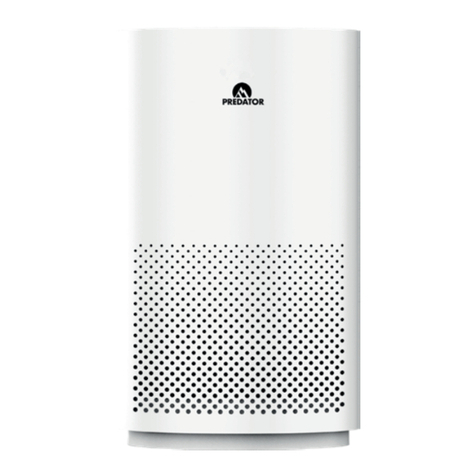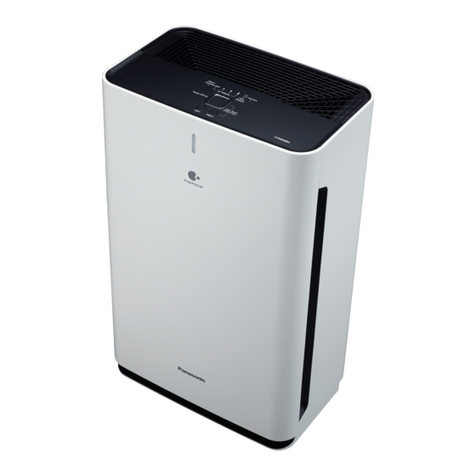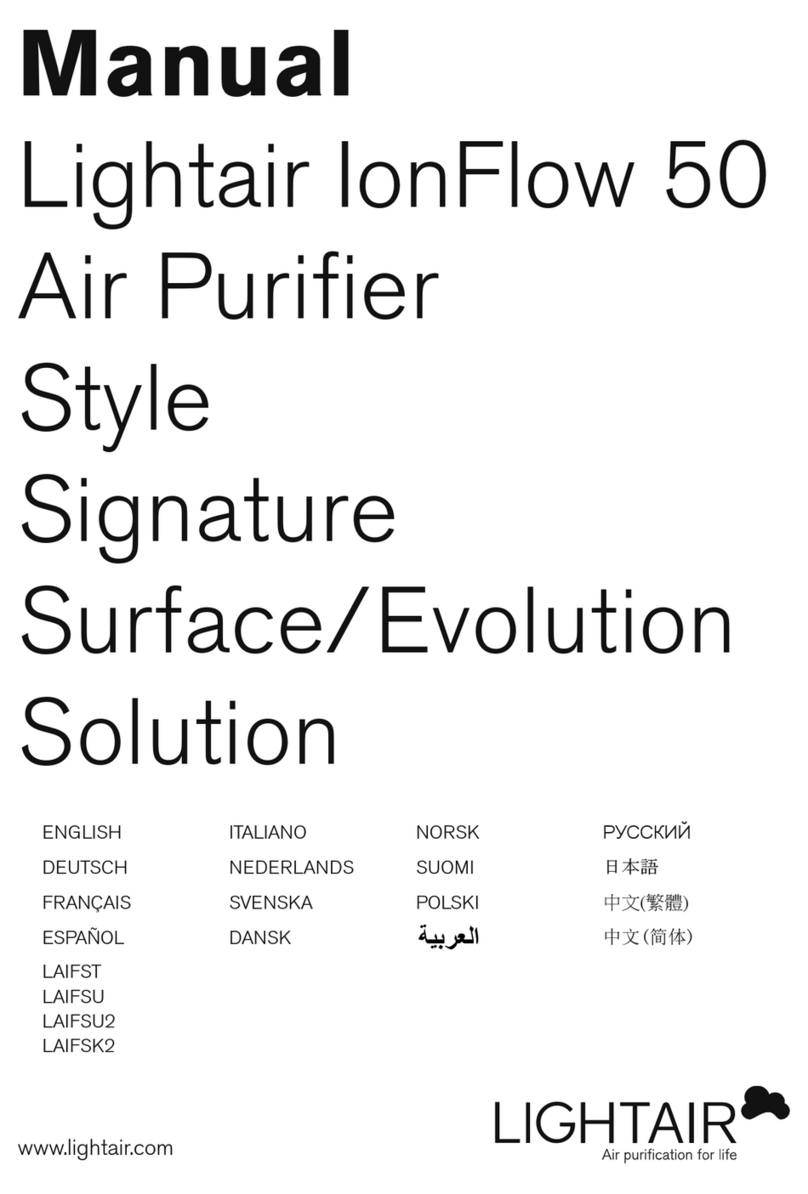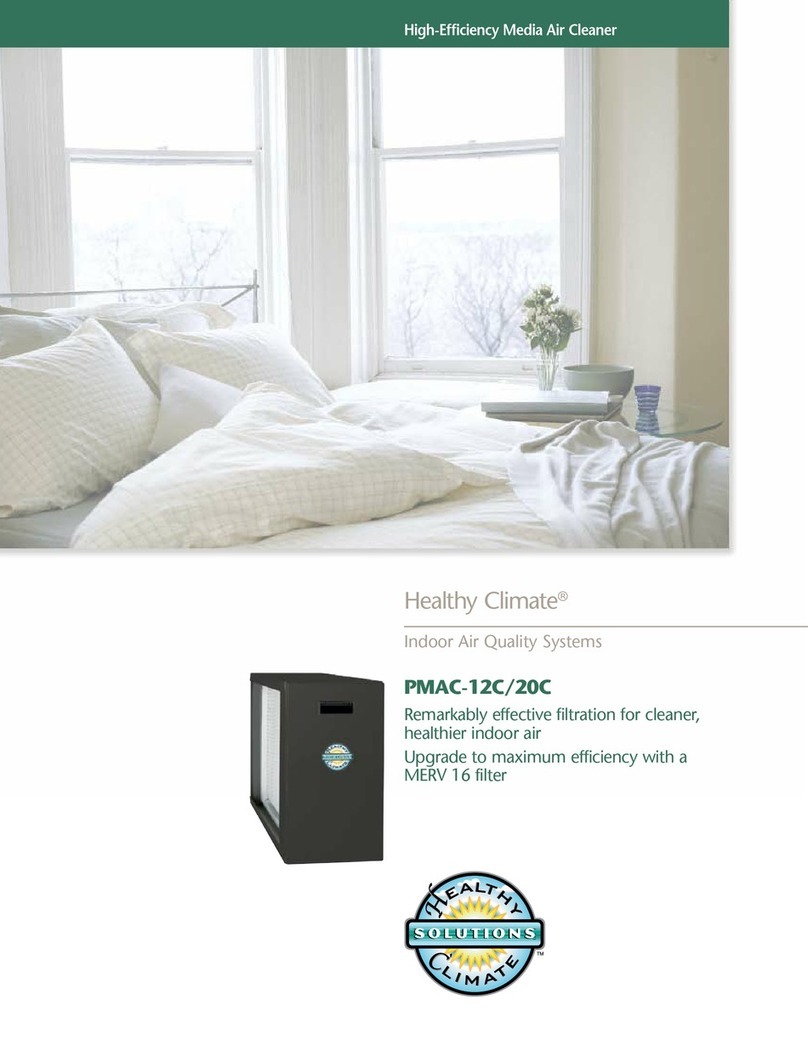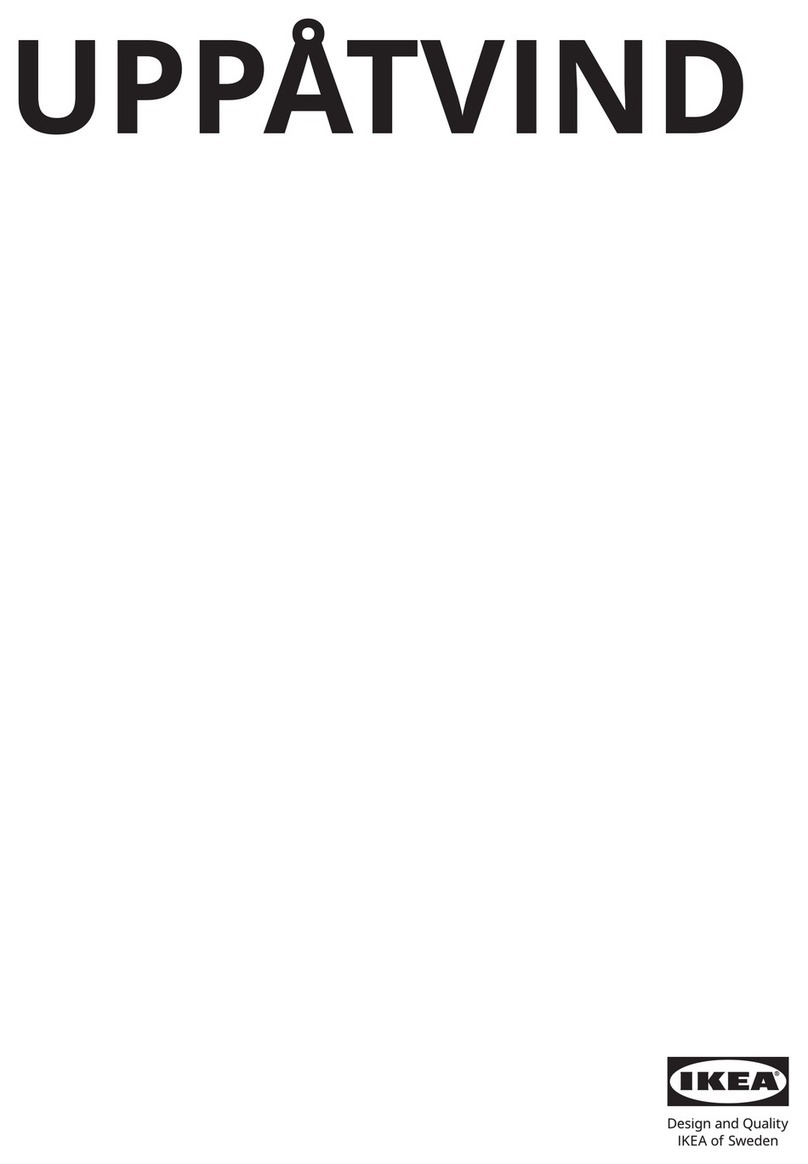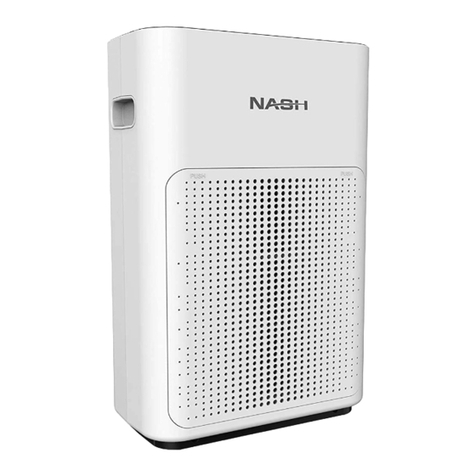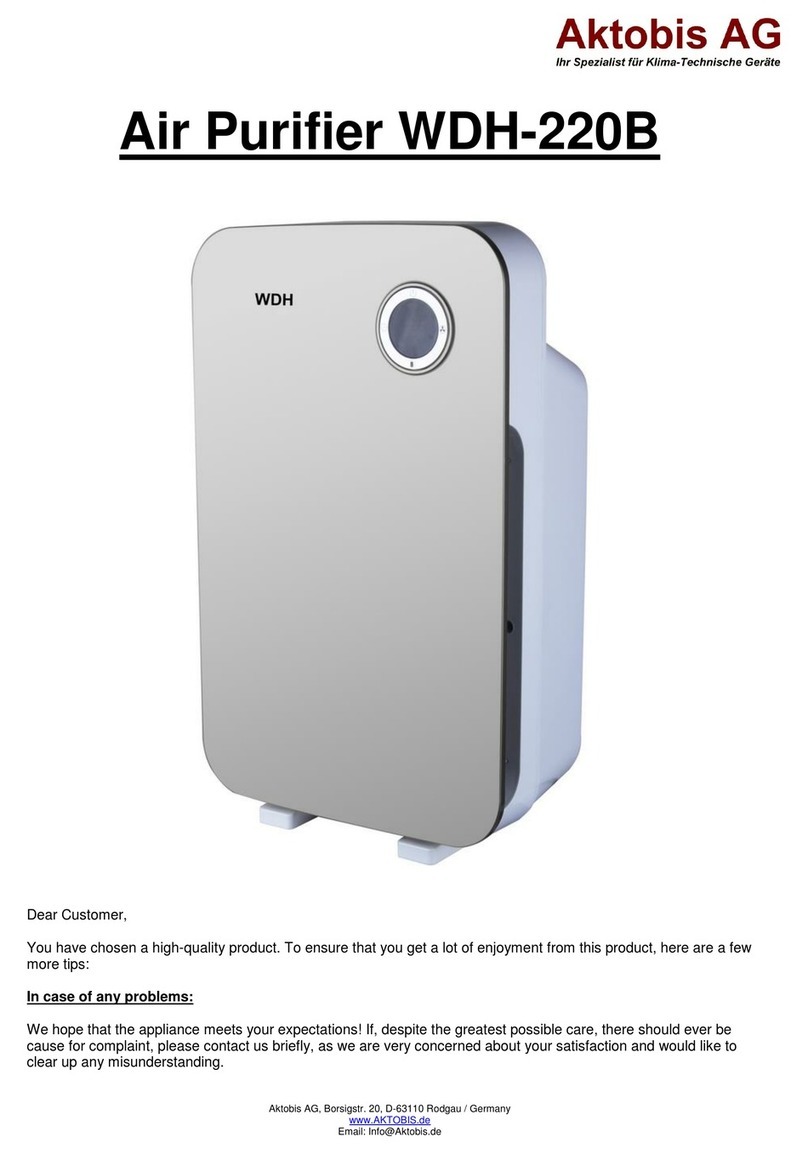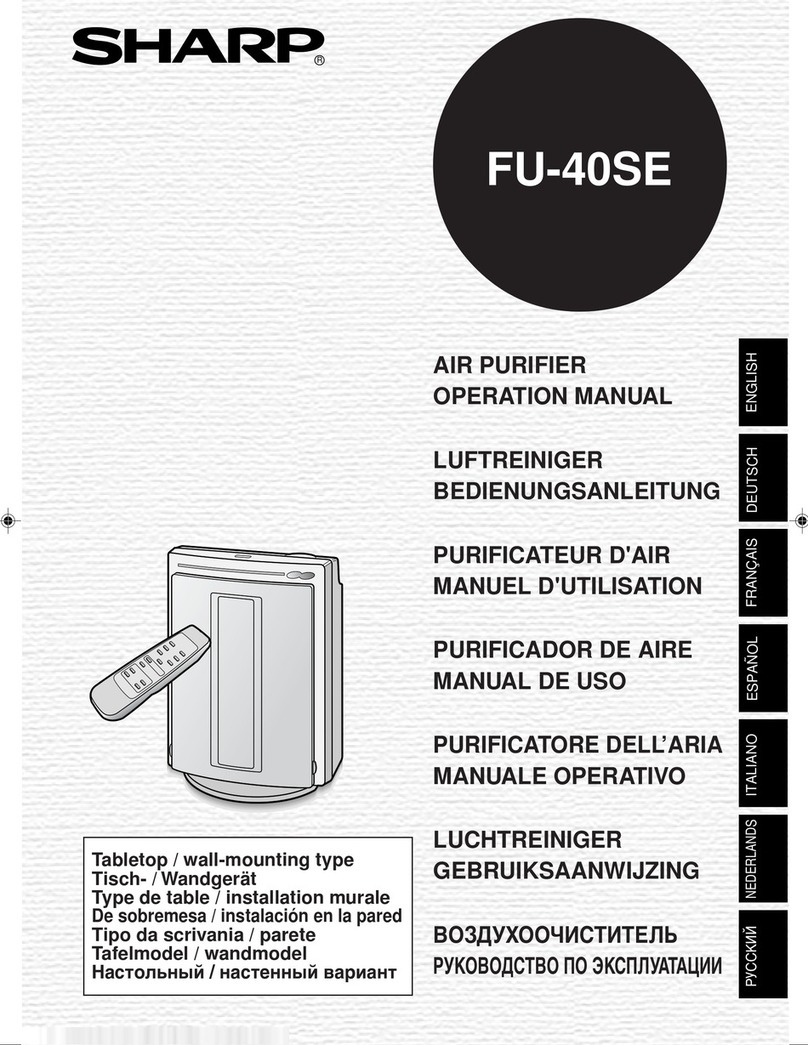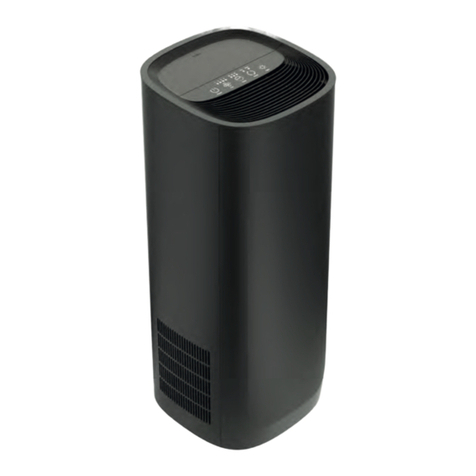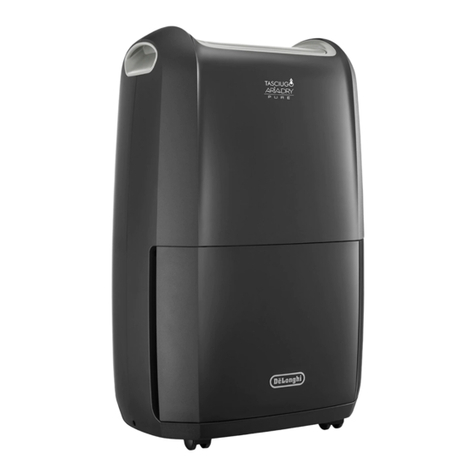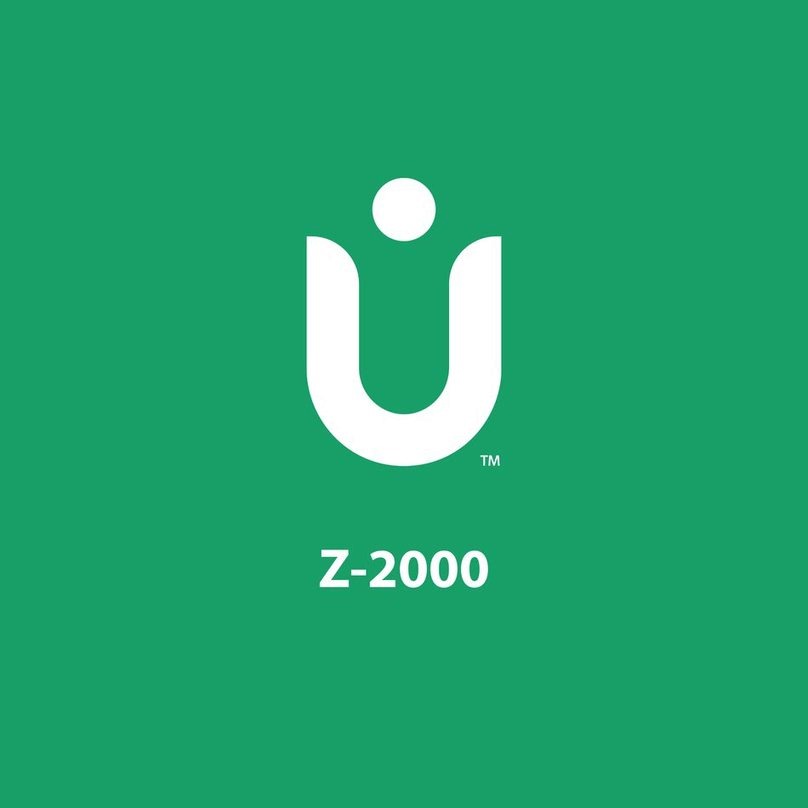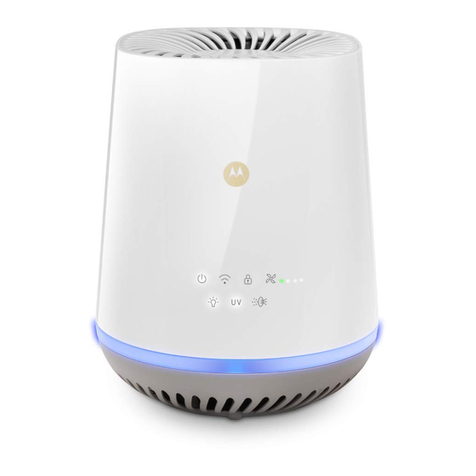
5
PLANNING THE INSTALLATION
- WARNING -
The XJ-2 ambient media air cleaner is not
explosion-proof. It must not be installed where
there is danger of vapor, gas or dust explosion.
INTRODUCTION
Clean air is the subject of numerous laws and
regulations. Typical requirements in the United
States are those put out by the Occupational
Safety and Health Administration (OSHA). Private
groups, such as the American Society of Heating,
Refrigeration and Air Conditioning Engineers
(ASHRAE), have also published numerous
recommendations.
The health care industry is regulated by the Center
for Disease Control (CDC). The CDC has many
regulations regarding air cleaning, some of which
are covered next.
Normally, clean air is defined in regulations and
recommendations as air having a limited amount
of contaminant, commonly expressed as parts per
million milligrams per cubic meter. Approved
counteractions are intended to lower or eliminate
the amount of contaminants in the air. One of the
more common methods of achieving this goal is
through the use of media air cleaners.
CDC Guidelines
The air change rate shall be not less than 12 ACH.
The purpose is to reduce the concentration of
contaminants in the air by removing contaminated
air and replacing it with contamination-free air.
The amount of contamination-free air is an air-
change rate expressed in ACH (air changes per
hour.)
Air shall generally flow from the supply to the
Health Care Worker to the patient (or other
infectious source) to the exhaust.
The objectives are to avoid short-circuiting of fresh
air from supply to exhaust, to avoid stagnation of
air and consequent build-up of contaminant
concentration, and to avoid the Health Care
Worker being positioned between the infectious
source and the exhaust.
Room pressurization shall be negative for
Infectious Isolation Rooms. Provision shall be
made for daily monitoring of the pressurization.
(Optional) An audible alarm to indicate loss of
room pressure control shall be provided.
Air Quality Engineering offers as an accessory the
Room Pressure Monitor.
Air flows from areas of higher pressure to areas of
lower pressure. Thus negative pressurization of
isolation rooms is desired so that air flows into the
room from adjacent rooms and not from the
potentially contaminated isolation room into
adjacent rooms.
CDC Guidelines specify negative, monitored
pressure, but do not specify well what the
pressure should be. A minimum of 0.25 Pa (0.001
IN WG) is stated as the requirement for control of
airflow direction. However such low pressures are
very difficult to monitor conveniently.
Exhaust air shall be recirculated or discharged via
HEPA filters. Or exhaust air shall be exhausted
directly to outside via negatively pressurized
ducting, away from air-intake vents, persons and
animals or recirculated or discharged via HEPA
filters.
Provision shall be made for monitoring (pressure
differential), testing (integrity) and safe change of
HEPA filters. Provision shall be made to
automatically or manually adjust airflow to
compensate for HEPA filter loading.
The purpose of HEPA filtration is to remove
contaminants from the air. HEPA filters remove at
least 99.97% of all particles greater than 0.3
microns in diameter. CDC Guidelines state that
Mycobacterium tuberculosis droplet nuclei
probably range from 1 micron to 5 microns in
diameter, therefore HEPA filters can be expected
to remove infectious droplet nuclei from
contaminated air.

